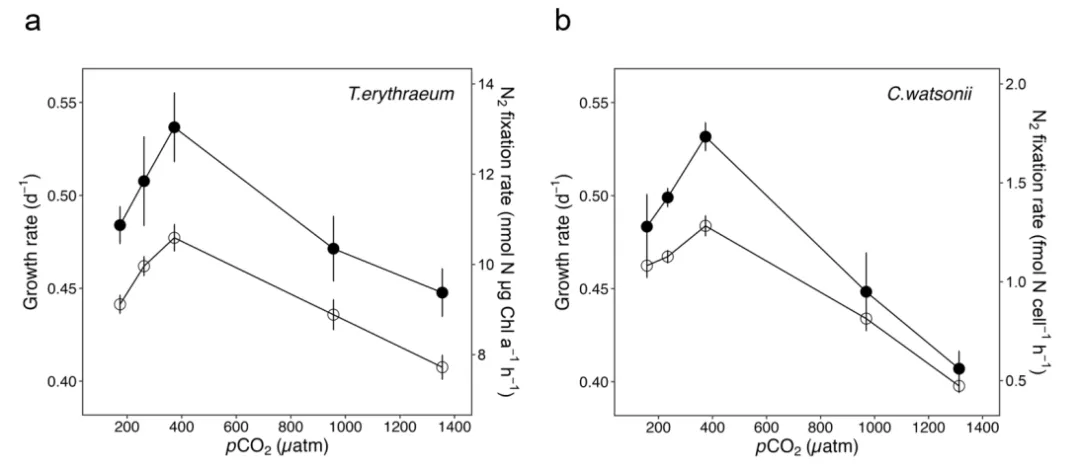Zuozhu Wen, Ruotong Jiang, Tianli He, Thomas J. Browning, Haizheng Hong, Shuh-Ji Kao, Jin-Yu Terence Yang, Dalin Shi*
Geophysical Research Letters
https://doi.org/10.1029/2024GL110599
Published: 03 October 2024
Abstract
Biological N2 fixation has been crucial for sustaining early life on Earth. Very negative δ15N values detected in Archean sediments, which are not observed in present-day environments, have been attributed to the low efficiency of proto-nitrogenases. Alternatively, variations in early atmospheric CO2 may also play a role. Here we examine the effects of CO2 concentrations on the biomass δ15N signatures of the diazotrophs Trichodesmium erythraeum and Crocosphaera watsonii, which utilize Mo-Fe nitrogenase (the most common form of the enzyme). Our results show that these organisms produce biomass with δ15N values up to~3‰ lower under both decreased and elevated CO2 concentrations compared to modern levels (~380 μatm). These deviations from modern CO2 levels reduce nitrogenase enzyme efficiency, leading to increased organismal isotopic fractionation during N2 fixation. This study offers an alternative explanation for the observed fluctuations in geological δ15N records and provides new insights into the past nitrogen cycle on Earth.
